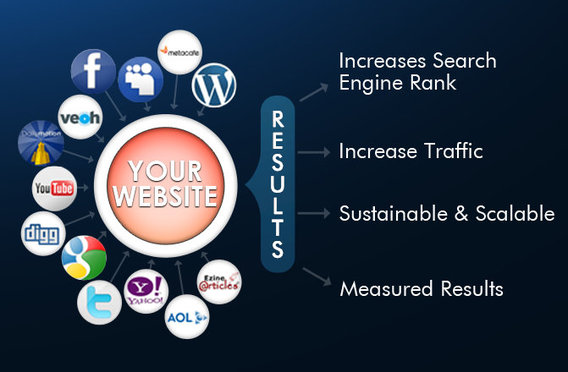Online Content Syndication
- Online Content Syndication: Overview
- Online Content Syndication: Facts and Information
- Online Content Syndication: Strategies and Solutions
- Online Content Syndication: References
Online Content Syndication: Overview
The Online Content Syndication tutorials and courses will introduce the concepts, theories, and applications of Online Content Syndication which you need to know.
What is the Online Content Syndication?

Online Content Syndication: Tutorials and Courses, SEO University
According to SEO Glossary and Dictionary, Online Content Syndication is a system or method in which online publishers republish articles, news items, press releases, blog posts, videos, or any other form of original material through various social media and Internet marketing channels.
Online Content Syndication: Facts and Information
Facts and Information about Online Content Marketing
Online content marketing is no longer a nice-to-have, it's a must-have. Online content marketing isn't merely a tactic, it's a strategy. From tiny, family businesses to multinational conglomerates, it's imperative that businesses create content and disseminate content through digital channels: websites, social media networks, blogs, video-sharing sites, newsletters, and more.
Facts and Information about Online Content Syndication
Online Content Syndication has been increasingly used as a way to syndicate online news content to websites, too as part of Search Engine Optimisation techniques. Adding news content not only lets websites target specific keywords and cost absolutely nothing, but also improve your search engine ranking considerably by the very nature of topic.
There are many online content syndication companies that specialize in providing the infrastructure for online content syndication, such as Zift Solutions and Webcollage.
Online Content Syndication: Strategies and Solutions
You can syndicate your content in an automated way or manually. If you choose to automate it, setting up a Really Simple Syndication (RSS) or atom feed on your website achieves content syndication seamlessly. This involves doing some minor programming and incorporating website plug-ins. An RSS or atom feed enables users to get web feeds from your updated content, such as blog posts, newsletter articles, headlines, and more. Users download the application and then automatically receive their feeds in a specified format, usually XML. Simply put, when readers subscribe to your feed, they automatically receive each item that you publish. Most readers subscribe to multiple feeds, so each day they receive a variety of articles, blog posts, and other information from the various publishers they subscribe to.
With manual syndication, you (the publisher) would take editorial content (articles, for instance) and push it out to targeted online locations, such as networks, directories, or websites and blogs that allow for content submission. This tactic involves market research to see which sites are relevant for your target audience, as well as which sites will benefit from the content you're pushing out—in other words, websites or blogs where your content would fill an editorial void.
Perhaps you could share a unique viewpoint that a particular site doesn't cover yet. Or perhaps the site doesn't have content and needs an expert's voice to bring in traffic. Selecting your potential publishing partners' needs to be a targeted and specific process. Your potential publishing partners might be industry friends you already know, friendly competitors, or complete strangers. Relationship development and cultivation is key to long-term mutually beneficial arrangements that could lead to other business opportunities, such as cross-marketing, affiliate marketing, and joint ventures.
To start looking for potential, synergistic publishing partners, you first start by conducting searches for keywords that are similar to the name or category of your business, products offered, or target audience.
For example, if you want to manually distribute financial newsletter content and are looking for other sites on the Internet that might republish your articles, you can start by simply searching Google for terms such as "financial websites,” "financial newsletters,” "financial articles,” or "submit financial content.” The results that come up are your lead results—that is, possible venues for your editorial contributions.
You can then examine these results to see whether they have editorial relevance and opportunity to your specific needs. The more defined your search is, the more narrow your search results will be.
You can also use free online tools, such as Alexa and Compete, to get some ideas of which other websites could be worth contacting:
- Alexa - Enter a competitor's website address or your own. A list of sites that the user also visits appears in the Related Links tab.
- Compete - In the Site Profile section, enter either your website or a competitor's website; then, under Referral Analytics choose, Show Destination Sites. You'll see similar websites that visitors are frequenting, which again, are more potential publishing partners for you to contact. Note: This is not a free service. To access the Referral Analytics data, you need to subscribe to Compete's Pro Service for a nominal fee.
When you find some solid candidates to follow up with, simply call or email them (also known as cold contacting), explaining your credentials, relevance, content, and editorial objective. Your goal is to create another outlet in which your content will get "interest-free” exposure.
Whether you decide to syndicate your content manually or automatically via an RSS feed, you've made a wise decision for your business. Syndicating content has become increasingly important over the years and is a natural way for online publishers (especially those with little to no startup advertising budget) to create website traffic, create visibility, and aid in search engine marketing and optimization (SEM/SEO) efforts.
Online Content Syndication: References
- Online Content Syndication: Books
- Online Content Syndication: eBooks
